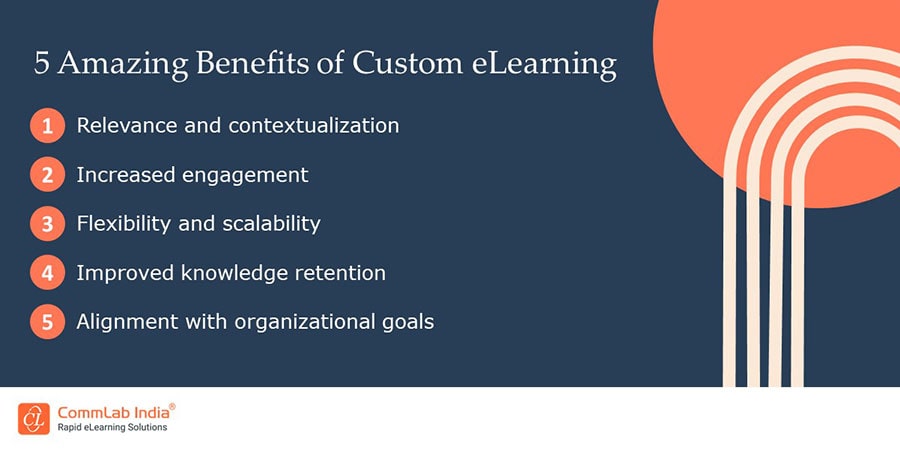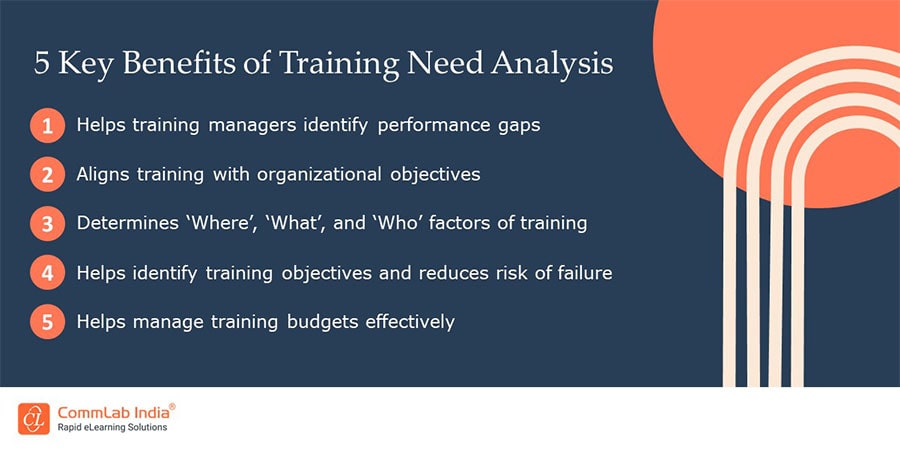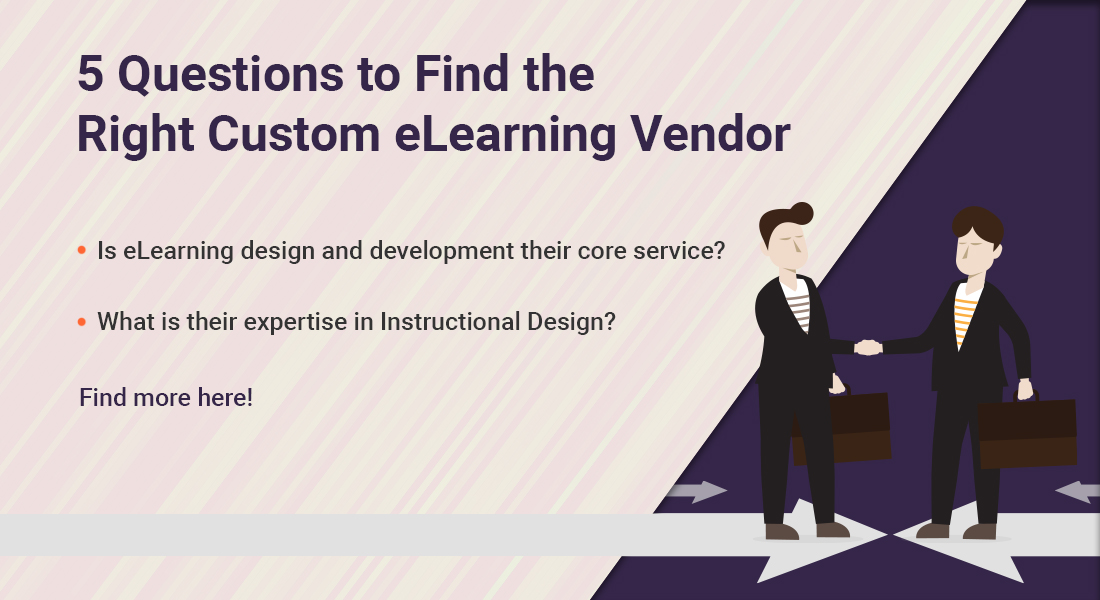Tailored Learning Experiences — How to Master Custom eLearning Content Creation
Custom eLearning offers personalized learning experiences. Read the blog to explore amazing tips to master the art of custom eLearning content creation.

In today's fast-paced corporate environment, the demand for effective training methods has never been higher. With the advent of technology, eLearning has emerged as a powerful tool to deliver training content efficiently. However, generic off-the-shelf courses might not always meet the specific needs of your organization. This is where custom eLearning comes into play. Tailoring learning experiences to match the unique requirements of your workforce can significantly enhance engagement, retention, and overall learning outcomes. In this blog, we will delve into the realm of custom eLearning, exploring its benefits and providing insights into mastering the art of content creation for custom eLearning.
Custom eLearning Offers Personalized Learning Experiences
Here’s how to master content creation for custom eLearning:
- Need Analysis
- Collaboration With Subject Matter Experts
- Storyboarding and Content Design
- Multimedia Integration
- Interactivity and Engagement
- Accessibility and Usability
- Evaluation and Iteration
What is Custom eLearning?
For those who have just stepped into the world of corporate L&D, custom eLearning refers to the creation of tailored online learning experiences designed specifically for an organization's needs, objectives, and audience. Unlike off-the-shelf courses, custom eLearning content is personalized. It aligns business and learner needs to design a learning solution that best suits your learners as well as the organization. This approach allows organizations to deliver training that is highly relevant, engaging, and effective.
→ Download Infographic: Custom eLearning for Personalized Learning Experiences
What are the Key Benefits of Custom eLearning?

Relevance and Contextualization
Custom eLearning content is developed with a deep understanding of the organization's goals, challenges, learner needs, and industry dynamics. The content is carefully crafted considering the learning needs, styles, and preferences of learning to offer personalized learning experiences. By incorporating real-life scenarios and examples relevant to learners' roles, you can enhance their understanding and application of concepts.
Increased Engagement
Tailored content resonates better with learners as it addresses their specific learning needs and interests. Custom eLearning negates the one-size-fits-all approach as the content is crafted keeping the learners in mind. This leads to higher engagement levels, as employees feel more motivated to participate and learn when the training content is directly aligned with their job tasks.
Flexibility and Scalability
Custom eLearning courses can be designed to accommodate various learning styles and preferences, offering flexibility in delivery methods such as interactive modules, videos, simulations, and assessments. Additionally, they can be easily scaled and updated to adapt to evolving business requirements.
Improved Knowledge Retention
By catering to individual learning preferences and incorporating multimedia elements, custom eLearning fosters better knowledge retention among employees. Interactive activities, quizzes, and assessments reinforce learning and help identify areas that require further reinforcement.
Alignment with Organizational Goals
Custom eLearning content can be aligned closely with organizational goals, values, and performance expectations. It serves as a strategic tool to impart essential skills and knowledge that directly contribute to the company's success, ensuring a clear link between training outcomes and business objectives.
How to Master Custom eLearning Content Creation
Content is king. In today’s fast-paced corporate world, where employees are pressed against time and it is hard for them to find time to upskill and reskill themselves, crafting courses that have relevant content is of utmost importance. Here are a few tips to master the art:
Training Needs Analysis
This is the first and the most important aspect of crafting content for custom eLearning. Conduct a thorough needs analysis to identify specific learning objectives, target audience characteristics, and performance gaps. Make sure to align the set learning objectives with the business goals for the long-term success of the training program. This initial step lays the foundation for designing relevant and effective eLearning content.

Collaboration with Subject Matter Experts (SMEs)
Collaborate closely with SMEs to gather accurate and up-to-date information relevant to the training topic. SME input is invaluable for ensuring the accuracy and relevance of the content. If you are new to eLearning design and development, starting from scratch could be challenging. In such a scenario, using the classroom training material as a base is a convenient option.
Storyboarding and Content Design
A detailed storyboard outlining the structure, flow, and interactions is the prerequisite of an engaging eLearning course. Pay attention to visual design, user interface, and navigation to create an intuitive and engaging learning experience. Use visually appealing aesthetics to attract learners. Seamless navigation is another key aspect of meaningful learning. A user-friendly interface with clear navigation enables learners to focus on the content better and makes learning enjoyable.
Multimedia Integration
A bland eLearning course with text-heavy slides is boring for learners. Incorporate multimedia elements such as graphics, videos, animations, and audio to enhance learner engagement and understanding. However, stay safe and avoid too much drama. Use subtle elements and ensure that they align with the learning objectives and do not distract from the core content.
Interactivity and Engagement
Learner disengagement is a major pain point when it comes to eLearning. Making the eLearning courses interactive is essential to keep learners engaged throughout the course. Plan for interactive elements such as simulations, branching scenarios, quizzes, and case studies to encourage active participation and critical thinking. Gaming elements such as scores, levels, badges, and leaderboards make learning fun. These engaging activities promote deeper learning and knowledge retention for a longer haul.
Accessibility and Usability
Ensure that the eLearning content is accessible to all learners, including those with disabilities, by adhering to universal accessibility standards and guidelines. Use simple and concise language and readable fonts. Also, make sure your videos are captioned. Host your eLearning courses on a learning management system (LMS) for hassle-free access. Design user-friendly interfaces and navigation paths to enhance usability and learner experience.
Evaluation and Iteration
Evaluation is an indispensable step to gauge the effectiveness of eLearning courses. Implement a robust evaluation framework to assess the effectiveness of the eLearning content in meeting learning objectives and driving performance improvements. Gather feedback from learners and stakeholders and use this input to iterate and refine the content for continuous improvement. You should also keep track of the latest industry trends and update the courses in those lines to help your learners stay current.
Custom eLearning space is revolutionizing fast. Watch this video to explore upcoming trends in custom eLearning for corporate training.
To Sum Up
Custom eLearning offers a tailored approach to corporate training, allowing organizations to deliver relevant, engaging, and effective learning experiences to their employees. By mastering the art of content creation through thorough analysis, collaboration, design, and evaluation, you can unlock the full potential of custom eLearning to drive employee performance and achieve business success. Embracing customization in eLearning is not just about delivering information; it's about creating meaningful learning experiences that empower employees to succeed in their roles and contribute to organizational growth.
Having more questions about custom eLearning? Here's a detailed infographic that’ll walk you through how custom eLearning can offer personalized learning experiences. Download now!


![Custom eLearning — How it Can Offer Personalized Learning Experiences [Infographic]](https://no-cache.hubspot.com/cta/default/59327/1353ae98-9928-439e-848a-c80f513a72dc.png)


